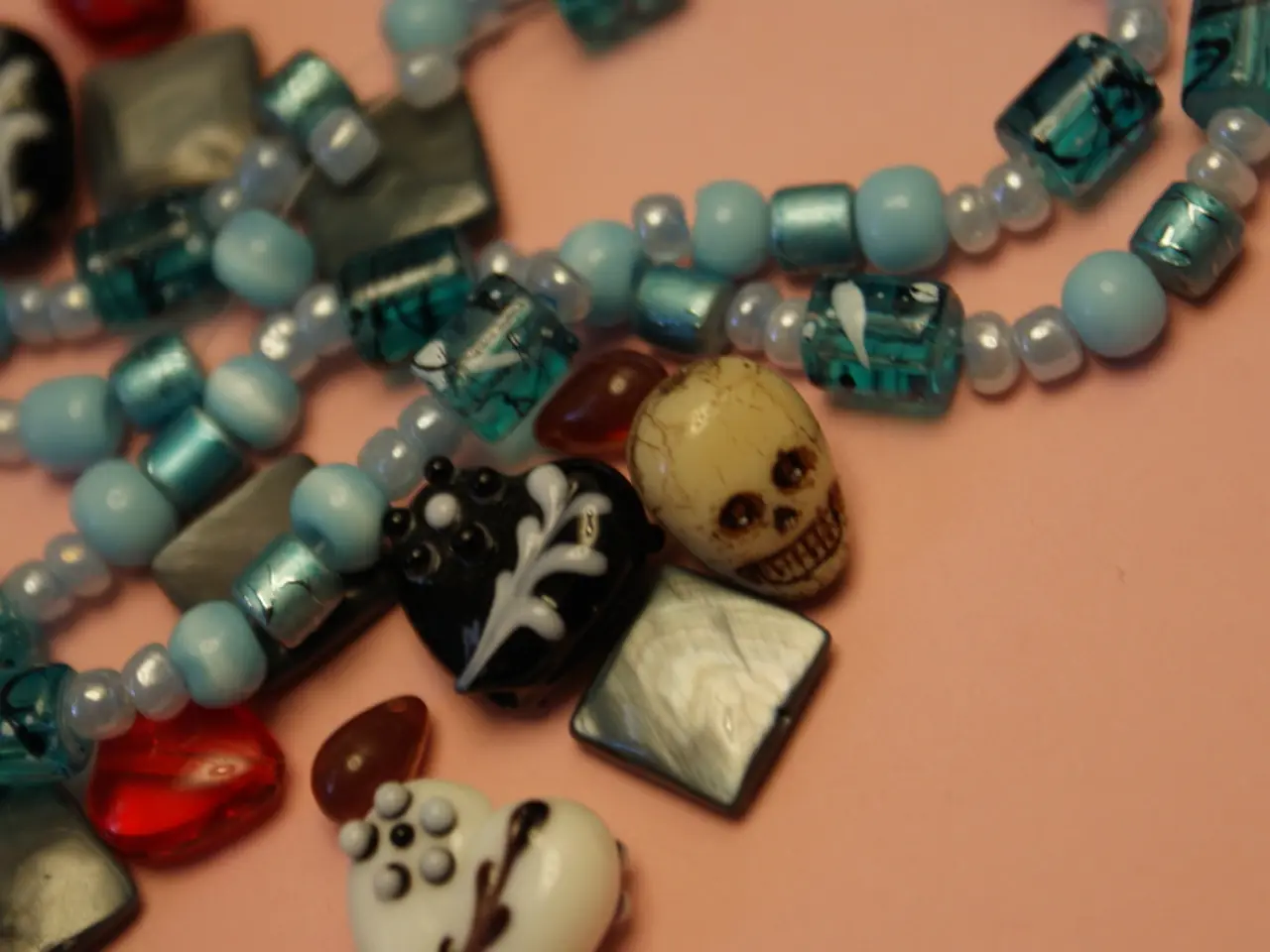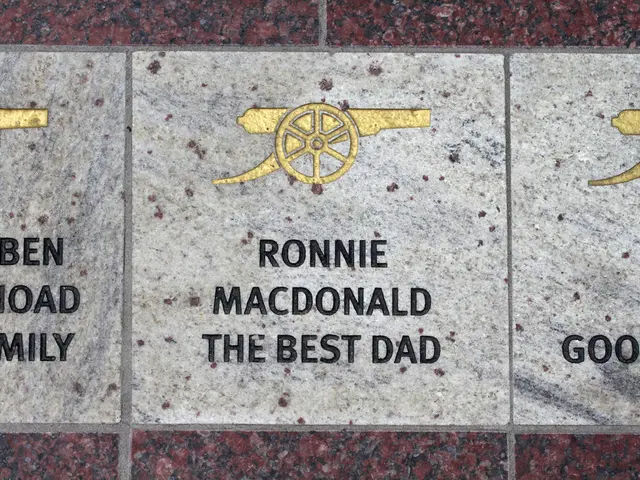Identifying Antique Edwardian Jewelry: A Guide
Edwardian Jewellery: A Celebration of Opulence and Elegance
Step back in time to the early 20th century, where Edwardian jewellery (circa 1901-1918) shines as a beacon of opulence, elegance, and delicate feminine style, often referred to as the "Beautiful Age" style.
This era is defined by its intricate craftsmanship, intricate openwork patterns, and lace-like filigree, creating an airy, light effect. The most notable motifs and characteristics of Edwardian jewellery include:
Motifs: - Garlands, bows, ribbons, and wreaths, reflecting romance and grace. - Delicate floral elements such as lilies, orchids, and stylized leaves. - Nature-inspired motifs like butterflies, moths, dragonflies, and bees. - Asymmetrical, fantastical, and dreamlike qualities sometimes appear. - Millgrain edging (tiny beaded borders) adds texture and subtle sparkle.
Materials: - Platinum, as the signature metal, enables intricate openwork and enhances diamonds' brilliance. - White gold was also used but platinum dominated in high-end pieces. - Diamonds were the primary gemstone, often set to maximize sparkle in "white on white" designs. - Pearls were extremely popular, frequently paired with diamonds in necklaces and earrings. - Coloured stones such as sapphires, rubies, and emeralds were sometimes included for contrast. - Enameling techniques like plique-à-jour, resembling stained glass, were employed. - Opals and moonstones appeared more in earlier transitional pieces, blending with Art Nouveau aesthetics.
Design style: - Jewellery pieces featured delicate, lightweight construction emphasizing intricate craftsmanship. - Designs complemented the flowing, lace-adorned fashion of the era. - Settings often showcased a central diamond surrounded by small accent stones or halos. - Jewellery was not only decorative but practical for everyday wear.
The reign of King Edward VII (1901 to 1910) marked a significant change in fashion, including jewellery. Long strands of 'spectacle set' diamonds, with minimalist designs, were popular during this period. Marquise and pear-shaped diamonds became more available, and single cut diamonds replaced rose cuts.
Advancements in diamond cutting technology during the Edwardian era resulted in more brilliant, rounder European-cut diamonds. Calibré cut stones were cut to fit into channels and dance around designs in Edwardian jewellery. Seed pearls of 3.5mm or smaller were cut into two halves and flush mounted onto metal, while articulating drops of pearls were used in open work designs.
Sapphire, emerald, opal, ruby, amethyst, demantoid garnet, moonstone or peridots were set in a circle of diamonds during the Edwardian era. Queen Alexandra was a fan of the 'dog collar' plaque style necklace, often backed by black velvet.
The Edwardian era saw a rise in the use of platinum in jewellery, due to its ability to strongly hold diamonds and suit the pale, pastel fashion palette. Tiaras were a fascination during the Edwardian era, with bandeaus serving as both necklaces and bracelets.
In summary, Edwardian jewellery is characterized by platinum craftsmanship, lace-like filigree, delicate romantic and nature-inspired motifs, and the elegant interplay of diamonds and pearls. This combination produced refined, airy pieces celebrating femininity and sophisticated artistry typical of the early 20th century.
[1] Edwardian Jewelry: History, Design, and Style [2] Edwardian Jewelry: The Most Beautiful Age [3] Edwardian Jewelry: A Timeless Classic [4] Edwardian Jewelry: A Guide to the Most Beautiful Age
[5] Edwardian Jewelry: Unveiling the Opulence and Elegance[6] Courses on Edwardian Jewelry: An In-Depth Study[7] Gemmology Workshops: Explore Edwardian Jewelry[8] Housing-Market Trends: Investing in Edwardian Jewelry[9] Finance and Wealth Management: The Role of Edwardian Jewelry[10] Energy and Retail: The Impact of Edwardian Jewelry on the Industry[11] Entrepreneurship: Lessons from the Edwardian Jewelry Age[12] Transportation and Logistics: The Role of Edwardian Jewelry in the Age of Travel[13] Leadership Insights: The Artistry of Edwardian Jewelry[14] Diversity-and-Inclusion Strategies: Edwardian Jewelry in a Modern Context[15] Wearables and Lifestyle: Modern Interpretations of Edwardian Jewelry[16] Fashion-and-Beauty Trends: The Revival of Edwardian Jewelry[17] Food-and-Drink Pairings: Complementing Edwardian Jewelry[18] Automotive Design: The Influence of Edwardian Jewelry[19] Small-Business Success: The Lessons of Edwardian Jewelry Artisans[20] Investing Strategies: The Value of Edwardian Jewelry[21] Wealth-Management Tips: Incorporating Edwardian Jewelry[22] Home-and-Garden Decor: The Harmony of Edwardian Jewelry[23] Business Opportunities: The Potential of Edwardian Jewelry[24] Career Paths: Jewelry Design and Edwardian Jewelry[25] Housing-Market Analysis: Edwardian Jewelry and Real-Estate Trends[26] Venture-Capital Investments: Backing Edwardian Jewelry Brands[27] Personal-Finance Management: Including Edwardian Jewelry in your Portfolio[28] Banking-and-Insurance Policies: Protecting your Edwardian Jewelry[29] Real-Estate Deals: The Role of Edwardian Jewelry Properties[30] Commercial and Residential Properties: Market Trends in Edwardian Jewelry Locations[31] Stock-Market Analysis: The Role of Edwardian Jewelry Brands




